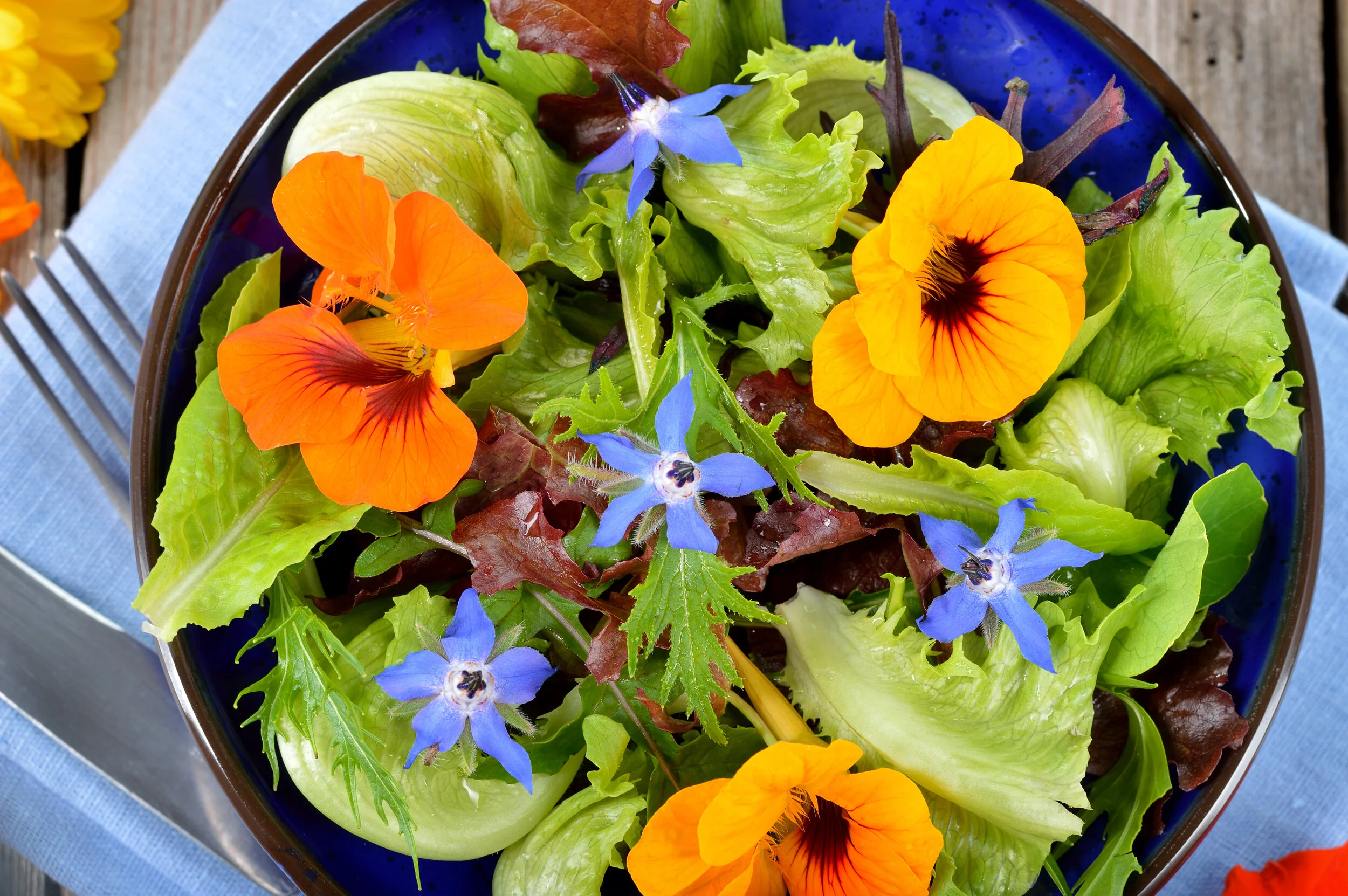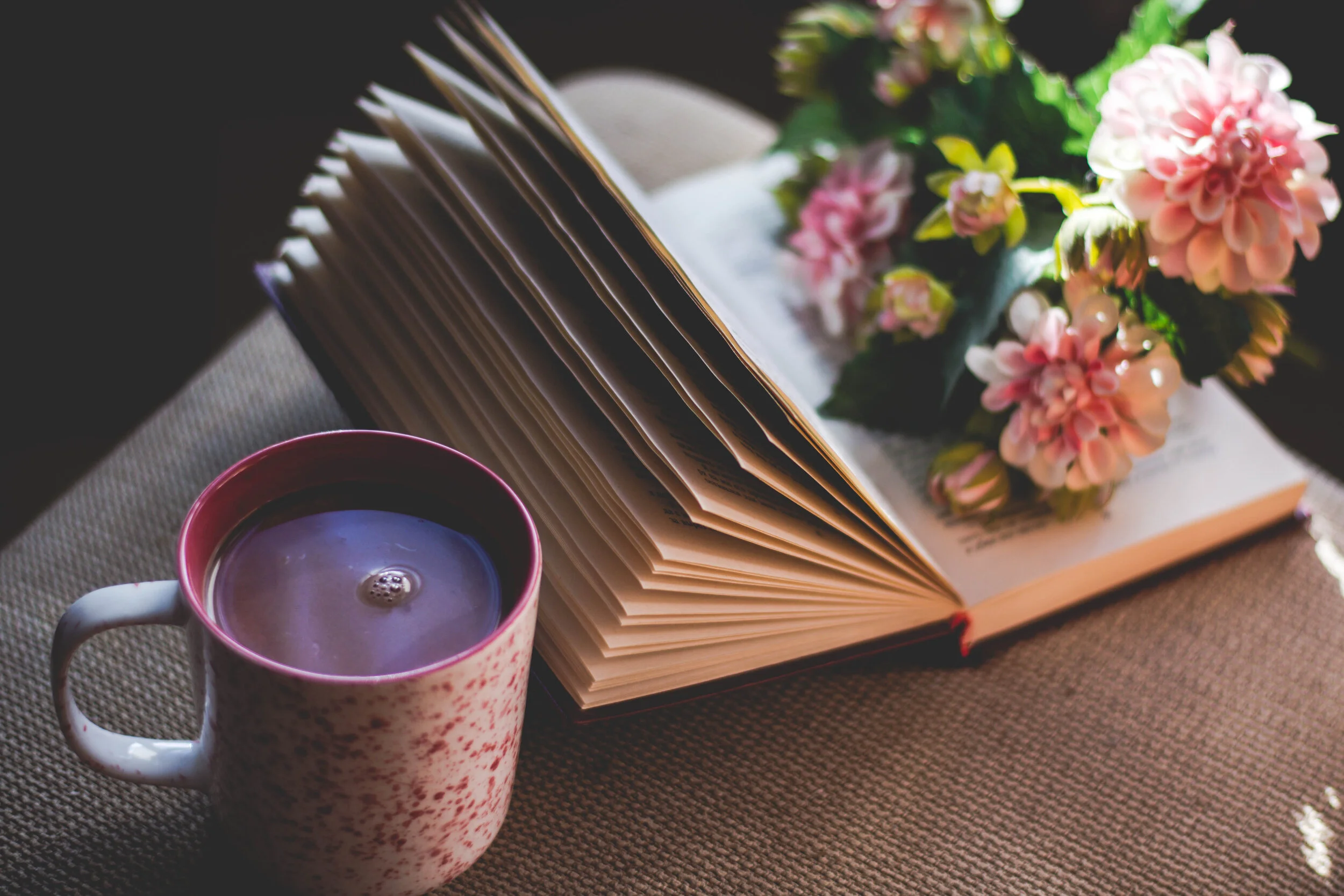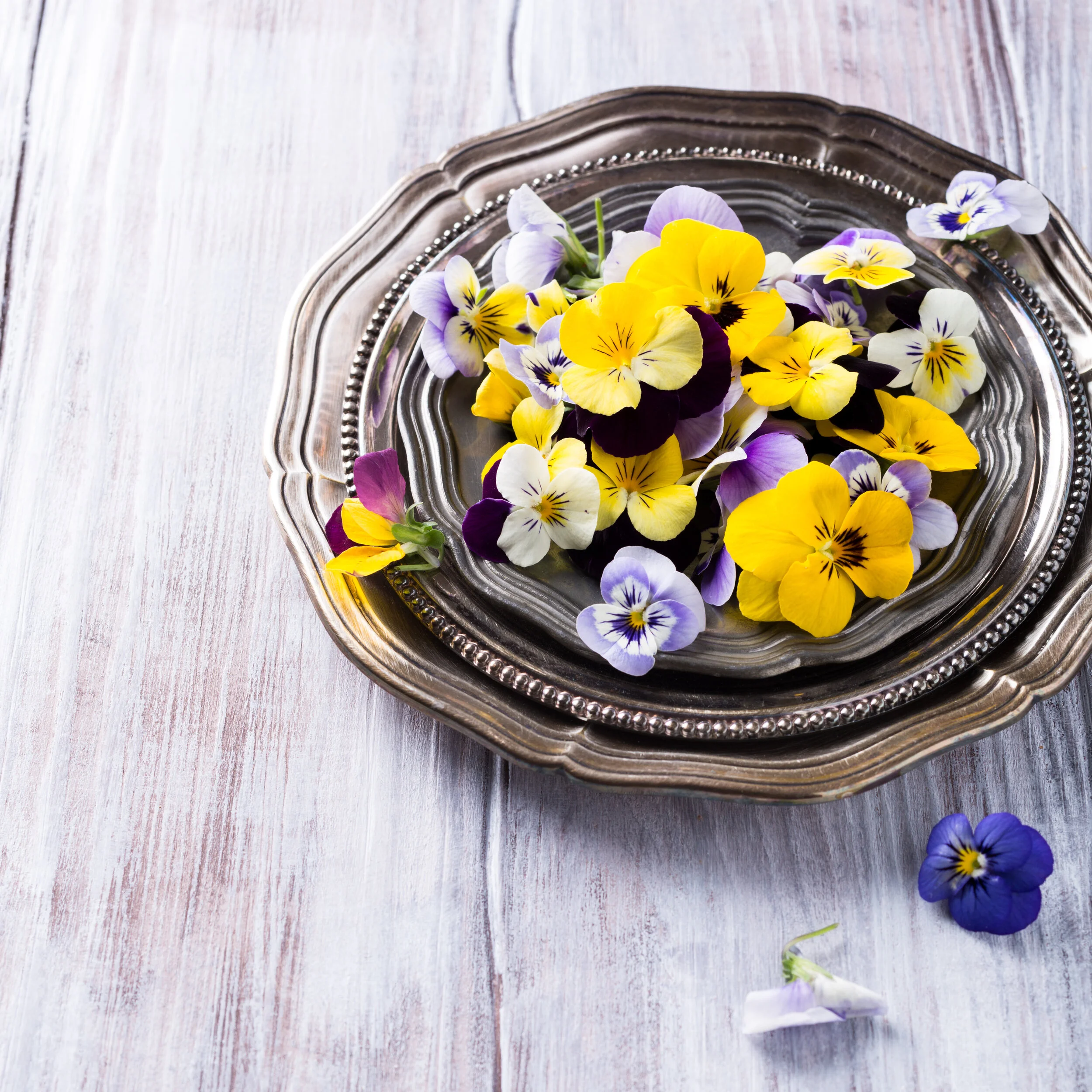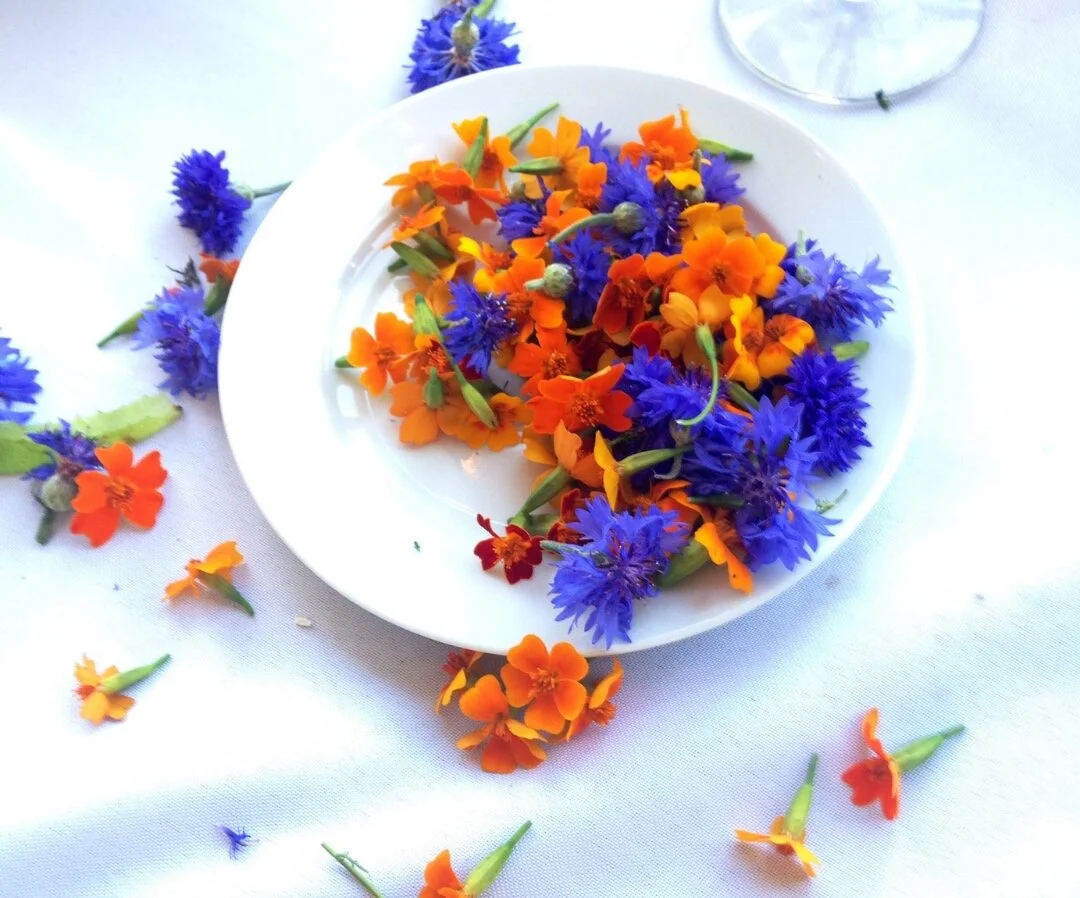Three Edible Flowers
Many flowers are edible. Using them in your baking, cooking, and beverages will add a layer of complexity and delight to your culinary creations making them uniquely tasty and beautiful.
Before you begin to experiment with edible flowers, take the time to learn which are safe to use and which aren’t. I’ve listed my ‘top 3 rules for edible flowers here’, but as always, let common sense rule – if in doubt, don’t consume!
Over the years I’ve compiled a list of my favourite edible flowers. Today I’m going to introduce you to three of them. All three can be grown in home gardens or planters during the summer time (at least where I live in Vancouver), and they can all be used either fresh or dried.
1 – Nasturtium: One of the most popular edible flowers is the nasturtium. All parts except the seed are edible and have a peppery taste similar to a radish. But it’s the bloom that really makes a dish pop. When you use it whole it adds a brilliant dash of colour to your dish.
2 – Borage: Borage is a dainty little star-shaped flower that most often comes in blue. It has a cooling, cucumber-like taste and makes the prettiest garnish for salads, cheese plates, sweet treats, and summer drinks.
3 -Calendula: Calendulas have a subtle flavour that ranges from peppery to bitter making them a great addition to soups and salads. They’ve adopted the nick-name ‘poor man’s saffron’, because their bright yellow, gold, or orange petals are so intense they can be used to tint custards, eggs and rice dishes.
There’s a lot to learn about edible flowers and how to use them, but once you start, you won’t turn back. My favourite book on the subject is Cooking with Flowers, by Miche Bacher. It’s packed full of information, recipes, and beautiful images.







